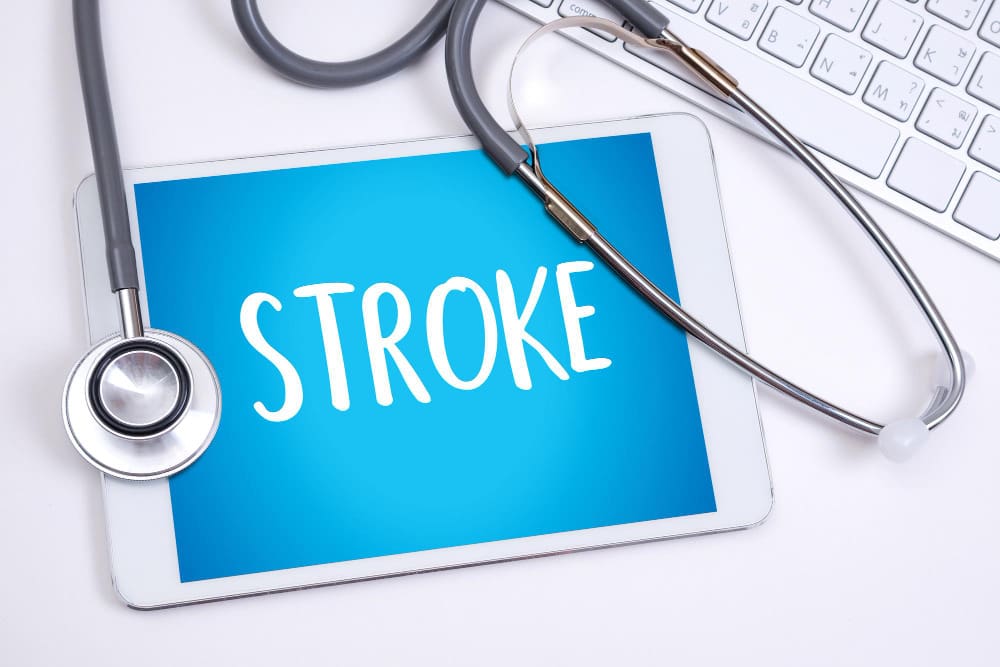Last Updated on November 4, 2025 by mcelik

Every second matters during a stroke. Knowing the right signs can save lives. At Liv Hospital, we offer top-notch healthcare and advanced stroke care.
The BE FAST acronym helps spot stroke signs and symptoms. It goes beyond the FAST acronym by adding Balance, Eyes, Face, Arms, Speech, and Time. It’s key for quick medical help.
We know how fast action is needed in stroke cases. Our dedication to excellence and patient care makes learning the BE FAST acronym vital for health awareness.

It’s vital to know how urgent a stroke is. At Liv Hospital, we say that stroke is a big reason for disability and death. Finding it early can really help.
A stroke happens when the brain’s blood flow stops. This can be because of a blockage or a burst blood vessel. Without blood, brain cells die fast. The brain’s immediate response to stroke can include a range of symptoms, from mild numbness to complete paralysis, depending on the area affected.
There are mainly two types of strokes: ischemic and hemorrhagic. Ischemic strokes block a blood vessel, happening in 85% of cases. Hemorrhagic strokes happen when a blood vessel bursts, causing bleeding. The effects of a stroke can vary widely, depending on the type, location, and severity of the brain injury.
Finding a stroke early is key because treatment time is short. For ischemic strokes, drugs that dissolve clots work best within hours. For hemorrhagic strokes, quick surgery can save lives. We emphasize that spotting stroke signs and symptoms quickly is essential for less brain damage and better survival chances.

The way we detect strokes has changed a lot. We now use the BE FAST method instead of the old FAST. This change shows we understand more about stroke symptoms and need to diagnose them better and faster.
The FAST acronym was made to help people spot stroke signs quickly. It means Face, Arm, and Speech, plus Time, to stress the need for fast medical help. But, it didn’t cover all stroke symptoms.
Even though FAST was a big step, it missed important signs like balance problems and eye changes. This made us need a better way to spot all stroke symptoms.
The BE FAST adds Balance and Eye changes to the FAST criteria. This makes it better at checking for stroke symptoms. It helps catch more cases and avoid missing important signs.
Research shows BE FAST can find 10-14% more strokes than FAST. This is key for getting patients the right care fast.
| Acronym | Components | Detection Rate |
|---|---|---|
| FAST | Face, Arm, Speech, Time | Baseline |
| BE FAST | Balance, Eye, Face, Arm, Speech, Time | 10-14% higher |
Using the BE FAST method helps doctors and the public spot stroke symptoms better. This change shows our ongoing work to improve care by diagnosing strokes accurately and quickly.
Knowing the BE FAST stroke signs can save lives. The BE FAST acronym is a tool to quickly spot stroke signs. It helps people act fast in emergencies.
The BE FAST acronym stands for Balance, Eyes, Face, Arms, Speech, and Time. Each letter is key to spotting a stroke:
Each part of BE FAST is important. It covers different stroke symptoms. Not everyone shows all signs.
For example, facial drooping is known, but vision changes or balance loss are also signs. BE FAST makes sure these signs aren’t missed.
The BE FAST method makes recognizing strokes easier. It’s a simple, memorable way to remember many symptoms. This helps in:
Stroke symptoms often appear together, not alone. BE FAST helps spot this. Knowing all symptoms makes responding to emergencies better.
In summary, the BE FAST stroke signs mnemonic is a key tool against strokes. Remembering BE FAST helps people quickly spot and act on stroke symptoms, saving lives.
Stroke symptoms can be hard to spot, but balance problems and eye changes are big warning signs. When someone has a stroke, they might struggle to stay balanced or see things clearly. Spotting these signs early is key to getting help fast.
Balance issues during a stroke can show up in many ways. People might trip, find it hard to walk, or lose their coordination. This happens because a stroke can mess with the brain’s balance and movement centers.
Some common signs include:
Testing for balance problems is easy and effective. The Romberg Test is one way. It involves standing with feet together, arms by your sides, and eyes closed. If you sway a lot or lose balance, it could mean a problem.
Another test is to stand on one leg. If you struggle to stay balanced or seem unstable, it might be a stroke sign.
Visual problems are also important signs of a stroke. These can be blurry vision, double vision, or losing vision in one eye. Some people might find it hard to see colors or light.
There are simple tests for visual problems linked to stroke. One is to cover one eye and try to read. If it’s hard to see or read with one eye, it could be a sign.
Another test is to check for double vision. Ask someone to look at an object and then quickly at another. If they see double or have trouble following objects, it might be a stroke.
| Symptom | Description | Simple Test |
|---|---|---|
| Balance Disruption | Difficulty standing or walking | Romberg Test or standing on one leg |
| Visual Disturbances | Blurred or double vision | Cover one eye and read, or track objects |
Face drooping and arm weakness are key signs of a stroke. They show up suddenly and can really affect how well someone can move. These symptoms are important to spot early.
Facial drooping is a big sign of a stroke. It happens when the face muscles on one side get weak or paralyzed. This makes the face droop or feel numb. It’s a subtle but important sign of a stroke, so it’s key to notice it right away.
To see if someone’s face is drooping, ask them to smile. If their smile is uneven, it could mean they’re having a stroke. You can also ask them to show their teeth or stick out their tongue. If their tongue goes to one side or their smile is off, it might be a stroke.
Arm weakness is another stroke symptom. It happens when the brain’s motor areas get affected. This leads to weakness or numbness in one arm. The weakness can be mild or severe, making it hard to move the arm.
To check for arm weakness, have the person hold their arms out with palms up and eyes closed. If one arm drops or they struggle to keep it steady, it could be a stroke. Another test is to ask them to squeeze your hands. If one side is much weaker, it’s a stroke sign.
| Symptom | Description | Simple Test |
|---|---|---|
| Face Drooping | One side of the face becomes weak or numb | Ask the person to smile |
| Arm Weakness | Loss of strength or numbness in one arm | Ask the person to hold both arms out |
By knowing these signs and doing simple tests, people can spot strokes fast. The BE FAST tool helps by focusing on face drooping and arm weakness. This way, people can get help quickly.
Spotting speech issues early is key in the BE FAST stroke response. It’s vital to quickly notice symptoms like speech troubles. This ensures fast medical help.
People with stroke may have trouble speaking clearly. They might struggle to find the right words or speak nonsense. This happens because the stroke hits brain areas that handle language.
Common speech problems during a stroke include:
Quickly checking speech is important to spot strokes. Simple tests can help, like asking someone to repeat a sentence or describe what’s happening.
Quick speech assessment involves:
The phrase “Time Is Brain” highlights the urgency of stroke treatment. The sooner a stroke is treated, the less brain damage there is.
| Time Factor | Impact on Stroke Treatment |
|---|---|
| Immediate Response | Reduces brain damage and improves outcomes |
| Delayed Response | Increases risk of severe brain damage and poor outcomes |
The first hour after a stroke is called the “golden hour.” Quick medical action during this time greatly improves treatment results.
Understanding the role of speech problems and time in stroke response is key. Recognizing signs and acting fast can greatly improve treatment success.
A complete BE FAST stroke exam checks several key areas to see if someone is having a stroke. The BE FAST mnemonic helps remember important signs: Balance, Eyes, Face, Arms, Speech, and Time.
To do a BE FAST stroke exam, follow these steps:
The American Heart Association says, “Time is brain,” showing how fast action is vital in treating strokes.
When calling emergency services, report the following:
Clear and concise reporting helps emergency responders give the best care.
Challenges may come up during the BE FAST assessment, such as:
Staying calm and following the BE FAST steps can help overcome these challenges.
In case of a suspected stroke, follow these steps:
By using the BE FAST method and knowing the emergency response steps, we can make sure people having a stroke get the right care quickly.
The BE FAST mnemonic is key for spotting strokes in various groups. It works well across different ages, genders, and cultures. Yet, a single method might not fit everyone perfectly.
Studies reveal that men and women show stroke symptoms differently. Both may have classic signs like face drooping and arm weakness. But women often have unique symptoms like:
It’s vital to spot these differences to diagnose strokes in women correctly.
Stroke symptoms change with age. Older people might show more brain-related symptoms. Younger folks might have the usual FAST signs. Kids and babies have their own signs that need special knowledge.
Culture affects how people see and talk about stroke symptoms. Some might think they’re caused by spirits or stress. Doctors need to understand these views to help quickly.
The BE FAST mnemonic works in many places, from hospitals to health classes. It’s easy for doctors and the public to use.
When using BE FAST, remember to:
Knowing how to prevent strokes is key to lowering their risk. We can do this by focusing on risk factors we can change. This way, we can make a big difference in preventing strokes.
Many things can increase your chance of having a stroke. But, we can change these through lifestyle changes or medical help. Hypertension is a big risk factor. We can manage it with medicine, diet, and exercise.
Other things we can change include diabetes management, cholesterol levels, and smoking cessation.
Living a healthy lifestyle is key to preventing strokes. This means being active, eating well, and not drinking too much alcohol. It also helps to manage stress with activities like meditation or yoga.
For those at high risk, medical help is very important. This might include anticoagulant therapy for heart issues or carotid endarterectomy for artery problems. It’s also about managing other health issues like heart disease or diabetes.
It’s important to keep an eye on these treatments and make changes as needed.
Regular health checks are essential for catching stroke risks early. This includes blood pressure checks, lipid profiles, and blood glucose monitoring. By keeping an eye on these, we can work with our doctors to lower our risk.
By using these strategies together, we can lower our stroke risk. This includes understanding risk factors, making lifestyle changes, using medical help when needed, and getting regular health checks.
We’ve looked at how important it is to know the signs of a stroke using the BE FAST acronym. This simple tool helps people spot stroke symptoms fast. This leads to quick medical help and better results for patients.
The BE FAST method helps find strokes sooner than old ways. Studies show it’s 10-14% better. Remembering BE FAST – Balance, Eye changes, Face drooping, Arm weakness, Speech problems, and Time – helps us and our loved ones act fast when a stroke happens.
The BE FAST check is key in treating strokes, helping doctors act quickly. By using the BE FAST mnemonic every day, we can lessen the impact of stroke. This saves lives.
Knowing about be fast stroke symptoms and using the be fast check can change lives. We urge everyone to spread this knowledge. Let’s make our community safer and more ready to help in stroke emergencies.
BE FAST stands for Balance, Eyes, Face, Arms, Speech, and Time. It helps identify key signs and symptoms of a stroke.
BE FAST adds Balance and Eyes to the original FAST. This makes it a more detailed tool for spotting strokes.
Balance issues can signal a stroke. They show the brain might not be coordinating movements well.
Visual symptoms include blurred vision, double vision, and vision loss in one or both eyes. Difficulty seeing can also be a sign.
Ask the person to smile. If one side of their face droops or feels numb, it might be a stroke sign.
Look for trouble lifting one arm, numbness or tingling, or an arm drifting down when both are raised.
Slurred speech, trouble finding words, or speaking nonsensically are signs of a stroke.
“Time Is Brain” means quick medical help is key. Delaying can cause more brain damage.
The golden hour is the first hour after symptoms start. Quick action can greatly improve outcomes.
BE FAST can be tailored for various ages and cultures. This ensures effective stroke detection and response.
High blood pressure, smoking, diabetes, high cholesterol, and obesity are modifiable risks for stroke.
Eating well, exercising, quitting smoking, and managing stress can lower stroke risk.
Regular screenings can spot stroke risks early. This allows for timely prevention and intervention.
BE FAST offers a more detailed checklist. It includes balance and eye changes, improving stroke detection.
Yes, BE FAST is useful in many settings. It helps enhance stroke detection and response in emergency departments and community programs.
Subscribe to our e-newsletter to stay informed about the latest innovations in the world of health and exclusive offers!
WhatsApp us